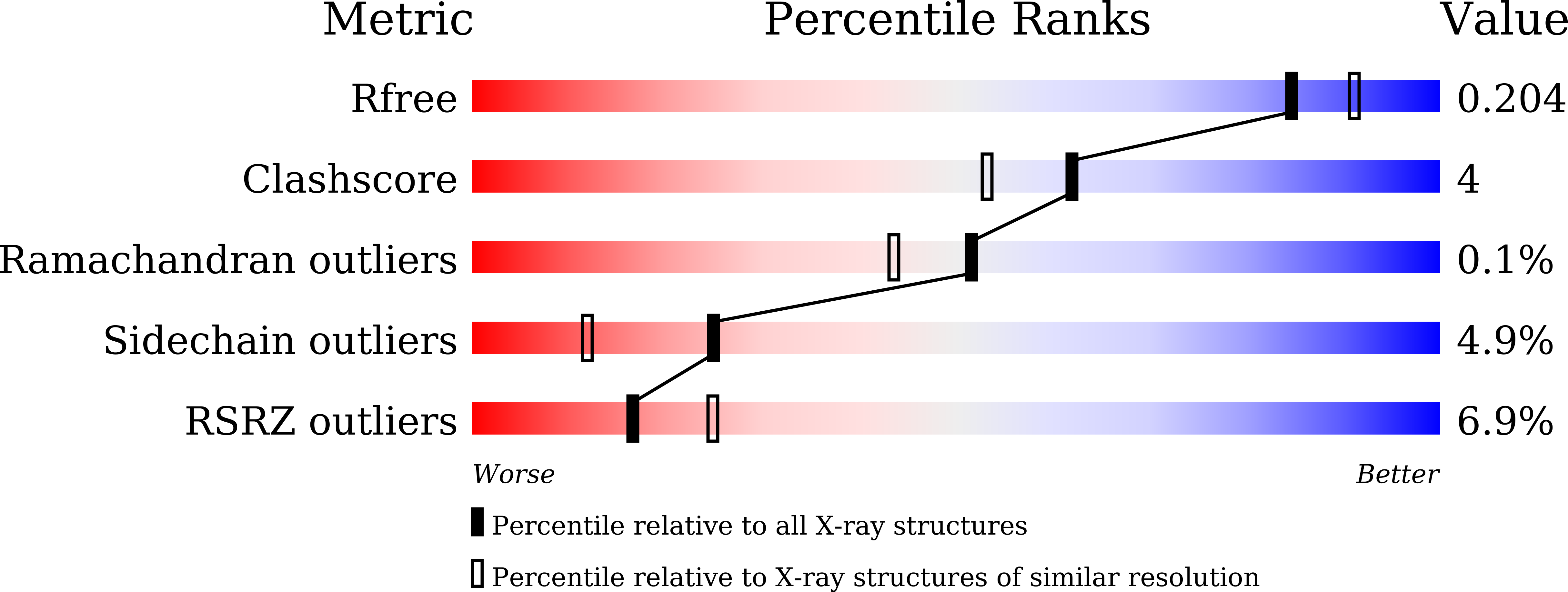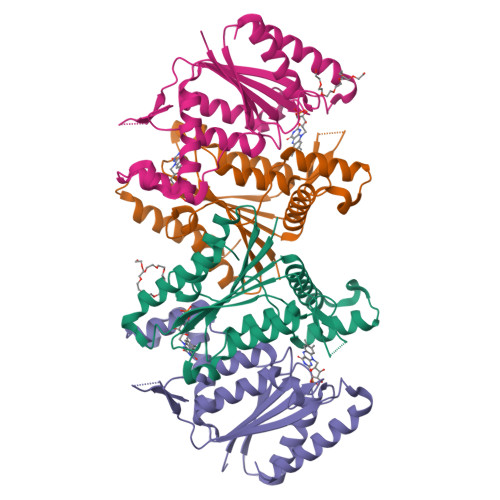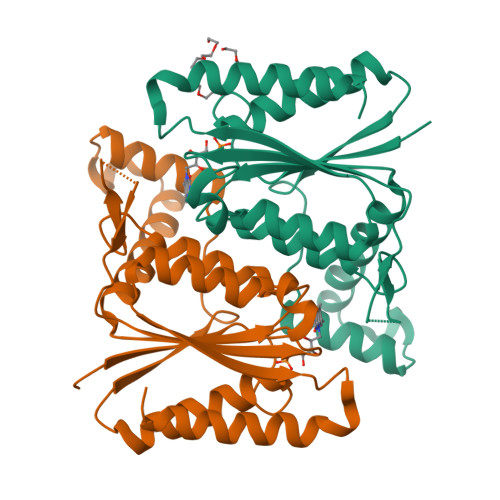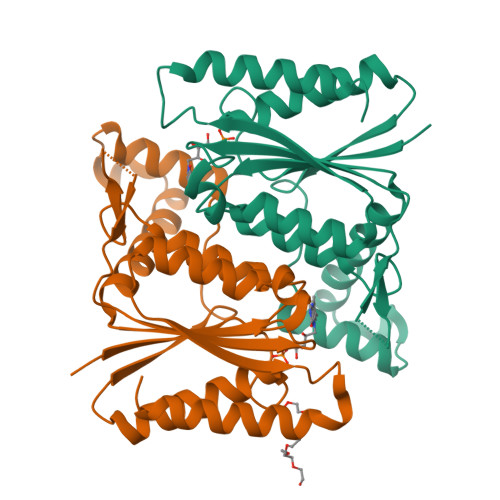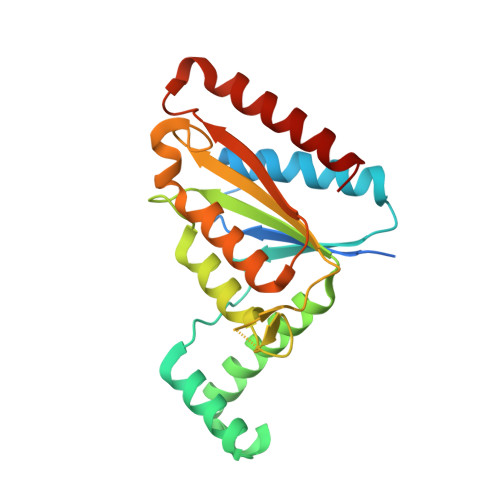Structural and biochemical characterization of an extremely thermostable FMN-dependent NADH-indigo reductase from Bacillus smithii.
Yoneda, K., Yoshioka, M., Sakuraba, H., Araki, T., Ohshima, T.(2020) Int J Biol Macromol 164: 3259-3267
- PubMed: 32861785
- DOI: https://doi.org/10.1016/j.ijbiomac.2020.08.197
- Primary Citation of Related Structures:
6JXN, 6JXS - PubMed Abstract:
The FMN-dependent NADH-indigo reductase gene from the thermophilic bacterium Bacillus smithii was overexpressed in Escherichia coli. The expressed enzyme functioned as a highly thermostable indigo reductase that retained complete activity even after incubation at 100 °C for 10 min. Furthermore, B. smithii indigo reductase exhibited high stability over a wider pH range and longer storage periods compared with indigo reductases previously identified from other sources. The enzyme catalyzed the reduction of various azo compounds and indigo carmine. The crystal structures of the wild-type enzyme in complex with FMN/N-cyclohexyl-2-aminoethanesulfonate (CHES) and the Y151F mutant enzyme in complex with FMN were determined by the molecular replacement method and refined at resolutions of 1.97 and 1.95 Å, respectively. Then, indigo carmine molecule was modeled into the active site using the molecular docking simulation and the binding mode of indigo carmine was elucidated. In addition, the structure of B. cohnii indigo reductase, which is relatively less stable than B. smithii indigo reductase, was constructed by homology modeling. The factor contributing to the considerably higher thermostability of B. smithii indigo reductase was analyzed by comparing its structure with that of B. cohnii indigo reductase, which revealed that intersubunit aromatic interactions (F105-F172' and F172-F105') may be responsible for the high thermostability of B. smithii indigo reductase. Notably, site-directed mutagenesis results showed that F105 plays a major role in the intersubunit aromatic interaction.
Organizational Affiliation:
Department of Bioscience, School of Agriculture, Tokai University, 9-1-1 Toroku, Higashi-ku, Kumamoto-shi, Kumamoto 862-8652, Japan. Electronic address: kyoneda@agri.u-tokai.ac.jp.







